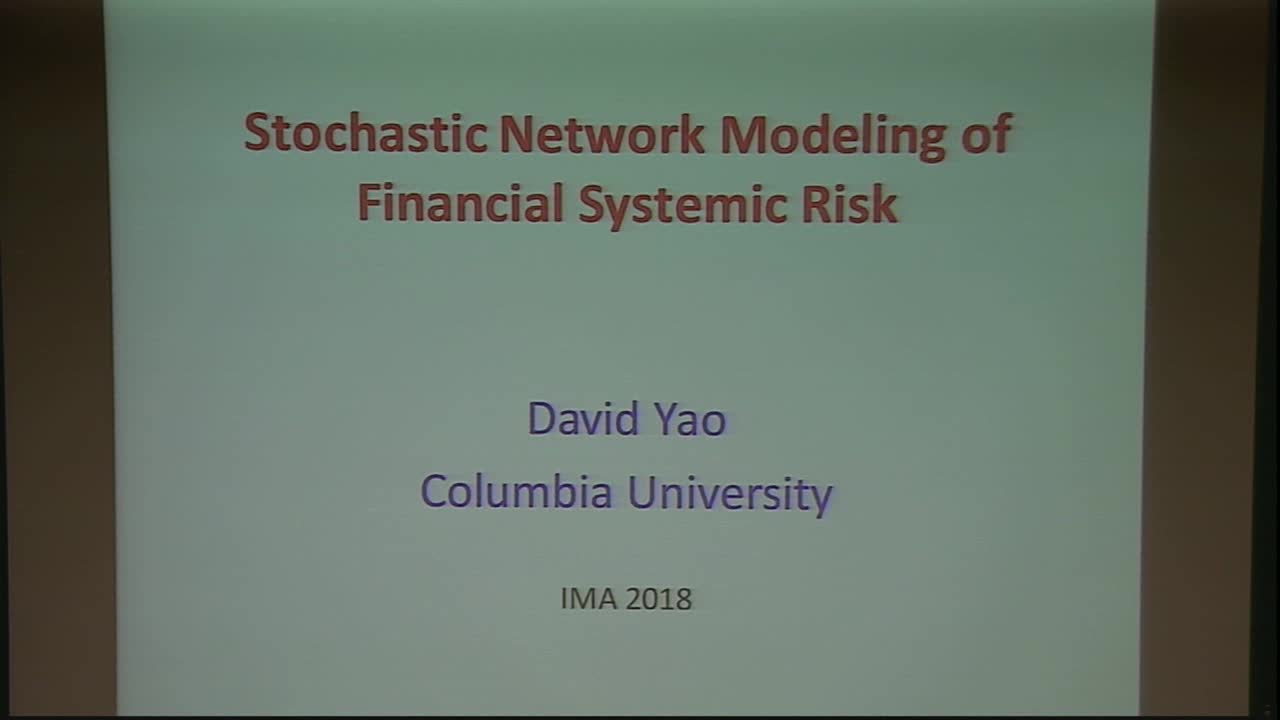A Network Model for Financial Systemic Risk
Presenter
May 15, 2018
Keywords:
- stochastic network, Skorohod problem, systemic risk
Abstract
We study default and contagion dynamics in a financial system modeled as a high dimensional dynamic complementarity problem, also known as Skorohod problem. An algorithm that solves the Skorohod problem will generate all possible default times over any given horizon, along with the evolution dynamics of each bank's asset values, liabilities and payment flows. The results inform the development of new risk measures for default clustering and contagion concentration.
It is known that the contagion effect during a financial crisis materializes through two mutually enhancing channels of interconnectedness. The first one is the direct connection among the banks via their counterparty activities. The second channel for contagion arises from the banks' interconnectedness indirectly through the market---fire sales at a distressed bank to raise cash to meet debt obligations will create a serious negative externality for the rest of the system. The last financial crisis (2007-09) shows that the two channels of contagion may form a vicious circle to reinforce each other leading to systemic catastrophe. Our dynamic network model clearly brings out the prominence of the market effect, which makes the financial network qualitatively different from say, social networks: the market can spread contagion much faster and wider than the diffusion through neighboring nodes that is typical in social networks.
